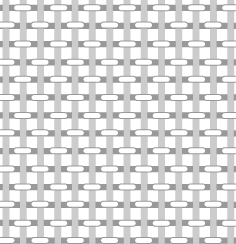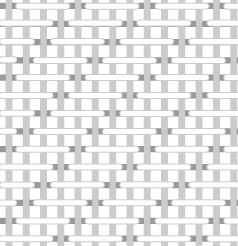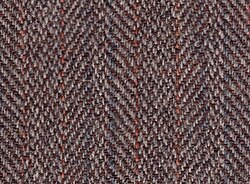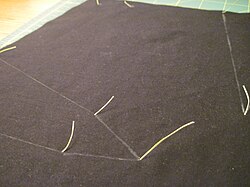AY Honors/Tailoring/Answer Key
1. Identify the following materials:
This is a hands on requirement, but all we can provide is some descriptions. An easy way to do this is at a fabric store. If teaching this honor to a group, you could collect a variety of samples and label them on the back with a marker.
a. Wool
The term wool is usually restricted to describing the fibrous protein derived from the specialized skin cells called follicles in sheep.
Wool is taken from animals in the Caprinae family, principally sheep, but the hair of certain species of other mammals is also sometimes called "wool", including cashmere from goats, mohair from goats, vicuña, alpaca, and camel from animals in the camel family, and angora from rabbits.
Wool has several qualities that distinguish it from hair or fur: it is crimped, it has a different texture or handle, it is elastic, and it grows in staples (clusters).
b. Worsted wool
Worsted (pronounced /ˈwʊstɨd/), is the name of a yarn, the cloth made from this yarn, and a yarn weight category. The name derives from the village of Worstead in the English county of Norfolk. This village became, along with North Walsham and Aylsham, a centre for the manufacture of yarn and cloth after weavers from Flanders arrived in Norfolk in the 12th century. Worsted cloth, archaically also known as stuff, is lightweight and has a coarse texture. The weave is usually twill or plain. Twilled fabrics such as whipcord, gabardine and serge are often made from worsted yarn. Worsted fabric made from wool has a natural recovery, meaning that it is resilient and quickly returns to its natural shape, but non-glossy worsted will shine with use or abrasion.
Worsteds differ from woolens, in that the natural crimp of the wool fibre is removed in the process of spinning the yarn. In Tropical Worsteds this use of tightly-spun straightened wool combined with a looser weave permits the free flow of air through the fabric.
Worsted is also used for carpets, garments, hosiery, gloves and baize.
c. Cotton
Cotton makes a soft, breathable textile. Shiny cotton is a processed version of the fiber that can be made into cloth resembling satin for shirts and suits. However, it is hydrophobic (does not absorb water easily), which makes it unfit for use in bath and dish towels. The name Egyptian cotton is broadly associated with quality products, however only a small percentage of Egyptian cotton production is actually of superior quality. Most products bearing the name are not made with the finest cottons from Egypt.
d. Linen
Linen is a textile made from the fibers of the flax plant. Linen is laborious to manufacture, but the fiber is very absorbent and garments made of linen are valued for their exceptional coolness and freshness in hot weather. Many products are made of linen: aprons, bags, towels (swimming, bath, beach, body and wash towels), napkins, bed linens, tablecloths, runners, chair covers, and men's and women's wear.
Textiles in a linen weave texture, even when made of cotton, hemp and other non-flax fibers, are also loosely referred to as "linen". The collective term "linens" is still often used generically to describe a class of woven or knitted bed, bath, table and kitchen textiles traditionally made of linen. In the past, "linens" also referred to lightweight undergarments such as shirts, chemises, waistshirts, lingerie (a word also cognate with linen), and detachable shirt collars and cuffs, all of which were historically made almost exclusively out of linen. The inner layer of fine composite cloth garments (as for example jackets) was traditionally made of linen, hence the word lining.
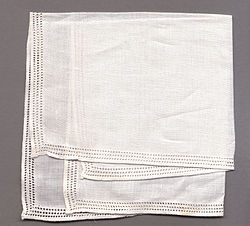
e. Silk
The best-known silk is obtained from the cocoons of the larvae of the mulberry silkworm Bombyx mori reared in captivity (sericulture). The shimmering appearance of silk is due to the triangular prism-like structure of the silk fibre, which allows silk cloth to refract incoming light at different angles, thus producing different colors.
f. Artificial silk
Artificial silk or (as the term is used in the textile industry) "art silk" is any synthetic fiber which resembles silk, but typically costs less to produce. In the present day, imitation silk may be made with rayon, mercerized cotton, polyester, a blend of these materials, or a blend of rayon and silk. When made out of bamboo viscose it is also sometimes called bamboo silk.
The first successful artificial silks were developed in the 1890s of cellulose fiber and marketed as art silk or viscose, a trade name for a specific manufacturer. In 1924, the name of the fiber was officially changed in the U.S. to rayon, although the term viscose continued to be used in Europe and it is also called "viscose rayon".
In 1931, Henry Ford hired chemists Robert Boyer and Frank Calvert to produce artificial silk made with soybean fibers. They succeeded in making a textile fiber of spun soy protein fibers, hardened or tanned in a formaldehyde bath, which was given the name Azlon. It was usable in the making of suits, felt hats, and overcoats. Though pilot production of Azlon reached 5,000 pounds (2,300 kg) per day in 1940, it never reached the commercial market; Du Pont's nylon was the winner in the quest to produce artificial silk.
Nylon, the first synthetic fiber, was developed in the United States in the late 1930s by Du Pont to become a cheaper and superior replacement for silk stockings, which are usually called "nylons" today. Although nylon is not a good substitute for silk fabric in appearance, it is a successful functional alternative. Nylon's properties when wet are far superior to rayon and silk. Nylon became a prominent industrial fiber in a short time frame, permanently replacing silk in many applications.
Two years after nylon's launch, Japanese silk became unavailable at the start of World War II. The US government redirected nylon production to military applications, such as parachutes.
Despite a generally similar appearance, genuine silk has unique features that are distinguishable from artificial silk. However, in some cases art silk can be passed off as real silk to unwary buyers. A number of tests are available to determine a fabric's basic fiber makeup, some of which can be performed prior to purchasing a fabric whose composition is questionable. Tests include rubbing the pile in your hand, burning a small piece of the fringe to smell the ash and smell the smoke and dissolving the pile by performing a chemical test.
Frequently, "artificial silk" is just a synonym for rayon.
g. Rayon
Rayon is a manufactured regenerated cellulose fiber. It is made from purified cellulose, primarily from wood pulp, which is chemically converted into a soluble compound. It is then dissolved and forced through a spinneret to produce filaments which are chemically solidified, resulting in synthetic fibers of nearly pure cellulose. Because rayon is manufactured from naturally occurring polymers, it is considered a semi-synthetic fiber. Specific types of rayon include viscose, modal and lyocell, each of which differs in manufacturing process and properties of the finished product.
Rayon is a versatile fiber and is widely claimed to have the same comfort properties as natural fibers, although the drape and slipperiness of rayon textiles are often more like nylon. It can imitate the feel and texture of silk, wool, cotton and linen. The fibers are easily dyed in a wide range of colors. Rayon fabrics are soft, smooth, cool, comfortable, and highly absorbent, but they do not insulate body heat, making them ideal for use in hot and humid climates, although also making their "hand" (feel) cool and sometimes almost slimy to the touch.
The durability and appearance retention of regular viscose rayon are low, especially when wet; also, rayon has the lowest elastic recovery of any fiber. However, HWM rayon (high-wet-modulus rayon) is much stronger and exhibits higher durability and appearance retention. Recommended care for regular viscose rayon is dry-cleaning only. HWM rayon can be machine washed.
h. Polyester
Polyester is a category of polymers that contain the ester functional group in their main chain. Fabrics woven or knitted from polyester thread or yarn are used extensively in apparel and home furnishings and in many industrial applications. Polyester fabrics are highly stain-resistant, in fact they require a very special class of dyes to color the fabric.
Polyester fibers are sometimes spun together with natural fibers to produce a cloth with blended properties. Cotton mixed with Polyester blends can be strong, wrinkle and tear-resistant and has reduced shrinking properties. Synthetic fibers in polyester also create materials with water, wind and environmental resistance compared to plant-derived fibers. Cons of cotton and polyester blends include being less breathable than cotton and trapping more moisture while sticking to the skin. They are also less fire resistant and can melt when ignited.
Polyester blends have been renamed so as to suggest their similarity or even superiority to natural fibers (for example, China silk, which is a term in the textiles industry for a 100% polyester fiber woven to resemble the look and durability of insect-derived silk).
i. Synthetic wool
One form of Synthetic wool is known as "Polar fleece" and is commonly used in jackets, hats, sweaters, sweatpants, cloth diapers, gym clothes, hoodies, inexpensive throw blankets, and high-performance outdoor clothing. It can be used as a vegan alternative to wool. It can be made partially from recycled plastic bottles and is very light, soft and easy to wash.
One of the first forms was Polar Fleece was created in Massachusetts in 1979 by Malden Mills, now Polartec LLC. This was a new, light, and strong pile fabric meant to mimic—and in some ways surpass—wool. The owner of the company, Aaron Feuerstein intentionally declined to patent Polar fleece, allowing the material to be produced cheaply and widely by many vendors, leading to the material's quick and wide acceptance.
2. Identify three of the following weaves:
a. Plain
Plain or tabby weave is the most basic of the three fundamental types of textile weaves. It is strong and hardwearing, used for fashion and furnishing fabrics.
In plain weave the warp and weft are aligned so that they form a simple criss-cross pattern. Each weft thread crosses the warp threads by going over one, then under the next, and so on. The next weft thread goes under the warp threads that its neighbor went over, and vice versa. Plain weave is also known as "tabby weave" or "taffeta weave."
b. Basket
Basketweave is a variation of plain weave in which two or more threads are bundled and then woven as one in the warp or weft, or both.
c. Rib
Rib weave is a variation of Plain weave that has the same basic construction under and over the warp yarns in the pattern of one under, one over and so on. The difference is that Rib weave uses one heavyweight yarn resulting in raised ribs either horizontally or vertically down the fabric, depending on whether the heavier, thicker yarn is used for the warp or the weft. Rib weave fabrics may be colour woven to create striped or plaid fabrics.
d. Twill
Twill is a type of fabric woven with a pattern of diagonal parallel ribs.
It is made by passing the weft threads over one warp thread and then under two or more warp threads, over one and under two or more, and so on, with a "step" or offset between rows that creates the characteristic diagonal pattern. Because of this structure, twills generally drape well. Examples of twill fabric are chino, denim, gabardine, tweed and serge.
e. Herringbone
A herringbone weave is made by passing the weft over two warp threads and under the next two. On the next pass the over-under pattern is offset by one so that the weft passes between two warp threads that the previous weft went over.
f. Pile
Pile weave is a form of textile created by weaving. Pile fabrics used to be made on traditional hand weaving machines. The warp ends that are used for the formation of the pile are woven over metal rods or wires that are inserted in the shed (gap caused by raising alternate threads) during weaving. The pile ends lie in loops over the inserted rods. When a rod is extracted the pile ends remain as loops on top of the base fabric. The pile ends laying over the rod may be left as 'loop pile', or cut to form 'cut pile' or velvet.
3. How are the following used?
a. Interlining
Interlining is extra fabric added to a garment to increase warmth, such as in coats. Interlining can be removable or integral to the garment. Compare to similar terms
b. Tailor tacks
To transfer pattern markings to fabric, or to otherwise mark the point where two pieces of fabric are to be joined. A special loose looped stitch used for this purpose is called a tack or tailor's tack. This is often done through two opposing layers of the same fabric so that when the threads are snipped between the layers the stitches will be in exactly the same places for both layers thus saving time having to chalk and tack the other layer.
c. Tailor canvas or other interfacing
Interfacing is a support fabric used in areas that need more stability than just the fabric weight. It is different then interlining because it has a different purpose. Examples of places you may want to add interfacing are collars, cuffs, waistbands, closures (like buttonholes), and sometimes hems.
d. Pad stitching
Pad stitches are a type of running stitch made by placing small stitches perpendicular to the line of stitching. Pad stitches secure two or more layers of fabric together and give the layers more firmness. They may also be used to enforce an overall curvature of the layers. Tailors pad stitch a jacket's lapel and undercollar to give them additional firmness, and maintain their curvature.
e. Iron-on interfacing
Interfacing is a textile used on the unseen or "wrong" side of fabrics to make an area of a garment more rigid. Iron-on interfacings contains a heat activated adhesive that sticks when the fabric is ironed on to the garment.
4. Tell the points to be considered when making a garment fit properly and look tailored.
Without a proper fit, even the most fashionable clothes are not going to make you look your best. When you see celebrities and think how good they lock even in simple clothes, the reason is that the tailor all their clothes.
We all have different bodies, so off the rack clothes just are never ideal for us. Nearly everything you buy can be improved so you may choose to modify your clothing to improve the fit. A common strategy is to look for clothes that are close to a good fit, and can be inexpensively adjusted.
This blogger put together a good guide with photos showing some good tailoring strategies. While focused on women, most of the points apply to men too.
5. Be familiar with the following pressing equipment:
Experts in sewing say that pressing clothing is just as important as the sewing in the process of tailoring. One presenter says to "sew press, sew press".
a. Sleeve board
A specialized small ironing board the has an elevated section to go inside a sleeve or pant leg. The sleeve can then be rotated around and pressed on all sides. Called a sleeve arm sometimes, like in the video. It looks like this.
b. Press mitt
A two sided device designed for pressing cotton or wool. It functions like a portable ironing board that you slip over your hand.
c. Seam roll
Similar to a dressmakers ham, but longer and straighter. Good for pressing darts and small curved surfaces. You just use the rounded end in the same way you would a ham.
d. Tailor's ham
A tailor's ham or dressmaker's ham is a tightly stuffed pillow used as a curved mold when pressing curved areas of clothing, such as darts, sleeves, cuffs, collars, or waistlines. Pressing on a curved form allows a garment better to fit body contours.
Images of tailor's hams on Amazon
e. Tailor's board
[Images here http://amzn.to/1MBhjwb] and often packaged and used with a clapper. How to use a Tailor's board [1] with photos.
f. Needle board
A needle board is a pressing tool constructed of heavy canvas which covers a layer of rubber. A needle board has hundreds of tiny needle-like wires about 1/2” long. It is used needles up, with the napped fabric (such as velvet, velveteen or wide wale corduroy) placed face down so that the nap falls into the depth of the needles without being crushed. Spread the fabric over the needles and steamed with an iron or steamer.
6. Know at least two methods for making bound buttonholes. Make a bound button hole using one of these methods.
Bound buttonholes are quite involved, so we point you to several well done tutorials. Here is a video explaining how:
And here is step by step instruction with photos.
7. Make a slit pocket with a welt or a bound pocket.
Here is a video on how to make a welt pocket:
And a bound pocket:
8. Demonstrate your skills in tailoring by making a man's or woman's suit that fits properly.
Exactly how to tailor a suit is beyond the scope of answers we can provide here. You will want to get a pattern and apply the skills you learned in the rest of the honor. While in the old days you would need to take formal training in tailoring, the advent of YouTube allows you to watch detailed videos for all the skills required in this vocation.
